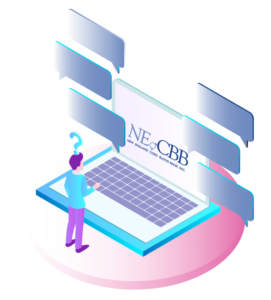
While considering cord blood banking, many people receive information from different sources such as other cord blood banks, blogs, friends, and family. Which is great! However, from time to time we find out that people have been told things that aren’t true. We’ve taken the time to list some of the most common myths and provided you with the truth about cord blood banking.
FALSE
NECBB uses Pall’s Cord Blood Sterile Collection Bag, which is suitable for all cord blood collections. It is FDA NDA approved and CE marked under the Medical Devices Directive for the collection of cord blood. Pall specifically manufactured this unit to collect cord blood from vaginal births, or within the sterile field of a cesarean section¹.
The truth about cord blood banking and its process is that it is routinely collected from both vaginal births and cesarean sections. The collection of the cord blood can be performed after birth regardless of the delivery method. Just be sure to let your delivery team know that you are collecting your baby’s cord blood.
2. https://www.cytivalifesciences.com/en/us/shop/cell-therapy/systems/sepax-s-100-sepax-2-cell-separation-system-p-08417
3. Abstract Presentations from the AABB Annual Meeting Anaheim, CA, October 24–27, 2015. Transfusion, 55: 3A–245A. doi:10.1111/trf.13294
FALSE
The Rizza family has a proven and unwavering commitment to private cord blood banking. Our processing lab has over 40 years’ experience in cryogenically preserving cells. New England Cord Blood Bank, Inc. is recognized as a global leader in the cryopreservation of cord blood and umbilical cord tissue worldwide. As a family-owned business we are not beholden to stockholders or a board of directors that dictate financial objectives or sales goals. Our obligation is to fulfill your needs. NECBB’s new state-of-the-art laboratory facility in Marlborough, MA is evidence of our dedication and devotion to being in this market for the long term.
FALSE
NECBB’s percent of use for cord blood aligns with the industry averages. NECBB’s cord blood units are of the highest quality and follow all AABB standards and FDA regulations. While the ultimate use of cord blood is up to the treating physician, we’ve never had a unit rejected because of its quality.
FALSE
While public banks do not charge for your donation, they do not store the stem cells specifically for your family. Only private banks ensure that your family maintains access and ownership of the specimen that is processed and stored. NECBB was founded on the vision that your dedicated specimen is available to your child (or family member). Banking at NECBB gives you the peace of mind that you will always have direct and exclusive rights to your cord blood and cord tissue.
FALSE
The truth about cord blood banking is that we are not the same. NECBB is AABB accredited. Additionally, we are FDA registered and inspected. You want to use a cord blood bank that has an established proficiency and the financial viability to make certain that they will safely store your specimen for years to come.
You can learn more about the AABB accreditation program on their website, aabb.org
FALSE
Physicians are highly educated professionals. But research in the field is rapidly evolving, so it’s hard for anyone to keep track of all the breakthroughs in stem cell therapy. Cord blood stem cells are currently used as part of the treatment plan for more than 80 conditions and there are more prospective therapy options being tested in clinical trials.
Scientists are still unaware of all the potential treatments that may someday be cord blood stem cell based. Current therapies may be the tip of the iceberg. Researchers are working on clinical trials to treat Autism(4), Cerebral Palsy(5), spinal cord injuries(6) and many more.
5. https://www.cerebralpalsyguide.com/treatment/clinical-trials/
FALSE
NECBB provides our readers with cord blood facts, and the truth is, while experiments in therapy are ongoing, stem cell treatments are real and being performed. The first cord blood transplant was performed in 1988. The Worldwide Network for Blood & Marrow Transplantation (WBMT) reports that there are more than 35,000 patients worldwide who have received cord blood stem cell transplants.
FALSE
We recommend discussing your options for collecting cord blood early. While some hospitals do have cord blood collection kits in inventory, there may not be a kit available at the time of your child’s birth. You’ll want to have the logistics finalized so that you can fully focus on the exciting new addition to your family. Enrolling early will help ensure a smooth collection and leave more time for you to attend to your new child.
Have a question you still need answered?
Sign up for a one-on-one, no obligation discussion about cord blood and tissue banking with one of the dedicated NECBB customer service representatives.